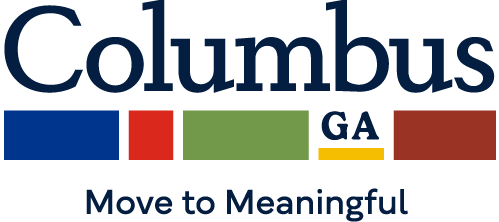Traffic Engineer G127

Columbus Consolidated Government
Major Duties and Responsibilities
-
This position is responsible for performing management and engineering duties in the direction of the TrafficManage ment Division.
- Assists the Assistant Engineering Director/Traffic Engineering Manager in planning, assigning, and supervising the work of the Traffic Engineering Division.
- Assists with the preparation of the annual Budget, approves procurements, and monitors expenditures, and projects.
- Performs the work of the Traffic Engineering Manager in his/her absence.
- Manages traffic signal operation and maintenance to ensure proper operation, routine maintenance, and timely repairs; responds to public inquiries concerning traffic signals.
- Responsible for regular retiming of traffic signals and systems, performing timing calculations, supervising timing input, performing fine-tuning, and preparing Measures of Effectiveness (MOE)reports.
- Performs and reviews transportation studies such as volume/turning movement counts, accident histories, travel time, congestion management, MUTCD Signal warrant studies, traffic impact studies, street lighting, etc.
- Prepares reports, resolutions, ordinances, bid specifications, requests for proposals, oral/written presentations and provides technical assistance to various committees and governmental agencies.
- Conducts meetings with citizens, developers, architects, engineers, consultants, and public information meetings to discuss private, City, and/or State projects.
- Carries out a continuous effort to improve operations and work processes; and works cooperatively and jointly to provide continuous improvement and customer-driven service.
- Performs other related duties as assigned.
Knowledge, Skills and Abilities
-
- Knowledge of the principles and accepted practices of the fields of Traffic and Civil Engineering.
- Knowledge of the principles, practices and methods of the installation, maintenance and repair of traffic signals, systems, ITS and related devices.
- Knowledge of federal, state and local regulatory standards and requirements applicable to the field of transportation.
- Knowledge of intermediate level mathematical computations including addition, subtraction, division, multiplication, geometry and trigonometry.
- Knowledge and application of the federal Manual on Uniform Traffic Control Devices.
- Knowledge of effective budgetary, managerial and supervisory principles and techniques.
- Ability to collect field data, perform statistical analysis and make recommendations for corrective actions and/or transportation related improvements.
- Ability to use personal computers, standard office equipment and software to include word processing, databases, spreadsheets and presentations.
- Ability to read and program traffic signal controllers and related components to include NEMA and the Georgia 2070 controllers.
- Ability to program and operate traffic signal and system software, video detection and surveillance, and traffic related ITS devices.
- Ability to collect traffic count data, analyze and develop signal timings, perform travel time studies and make fine tuning signal timing adjustments.
- Ability to plan, assigns, direct and review work of subordinates to ensure compliance to established policies, procedures and regulations and to meet departmental Goals and Objectives.
- Ability to work with minimum supervision, establish priorities, meet deadlines and coordinate with work with other departments and agencies.
- Ability to provide street lighting design and review designs submitted by local utility companies and consultants for compliance to City and Georgia DOT lighting requirements.
Minimum Educational and Training Requirements
-
Bachelor's degree in Traffic/Civil Engineering or Transportation Planning or a related field is required. Two to three years of professional experience in Traffic Engineering to include signal design, signal timing and system operation. Two or more years of progressively more responsible supervisory or managerial experience. Possess a valid driver's license issued by the state of Georgia or Alabama or be able to obtain one within sixty-days (60)after being hired. Registration as a Professional Engineer preferred.
Physical Requirements
-
The work is typically performed while sitting at a desk or table or while intermittently sitting, standing, walking,or stooping. The employee frequently lifts light objects, uses tools or equipment requiring a high degree ofdexterity, and must distinguish between shades of color. Additionally, the following physical abilities arerequired:
- Balancing – maintain equilibrium to prevent falling while walking, standing, or crouching.
- Feeling – perceiving attributes of objects by touch with skin, fingertips.
- Grasping – applying pressure to object with fingers, palm.
- Handling – picking, holding, or working with whole hand.
- Hearing 1 – perceiving sounds at normal speaking levels, receive information.
- Hearing 2 – receive detailed information, make discrimination in sound.
- Kneeling – bending legs at knee to come to rest at knees.
- Lifting – raising objects from lower to higher position, moving objects side to side, using upperextremities, back.
- Manual Dexterity – picking, pinching, typing, working with fingers rather than hand.
- Pulling - use upper extremities to exert force, haul or tug.
- Pushing – use upper extremities to press against objects with force, or thrust forward, downward,outward.
- Reaching – extending hands or arms in any direction.
- Repetitive Motion – substantial movements of wrists, hands, fingers.
- Speaking – expressing ideas with spoken word, convey detailed, important instructionsaccurately, concisely.
- Stooping – bending body downward, forward at waist, with full motion of lower extremities andback.
- Talking 1- expressing ideas by spoken word.
- Talking 2 – shouting to be heard above ambient noise.
- Visual Acuity 1 - prepare, analyze data, transcribing, computer terminal, extensive reading.
- Visual Acuity 2 - color, depth perception, field of vision.
- Visual Acuity 3 - determine accuracy, neatness, observe facilities/structures.
- Visual Acuity 4 - operate motor vehicles/heavy equipment.
- Visual Acuity 5 -close acuity for inspection of small defects, machines, use measurementdevices, or fabricate parts.
- Walking - on foot to accomplish tasks, long distances, or site to site.
The work is typically performed in an office or in the field, occasionally in cold, hot or inclement weather. Theemployee may be exposed to machinery with moving parts. The work requires the use of protective gear, devicesand to occasionally works in moving traffic.

